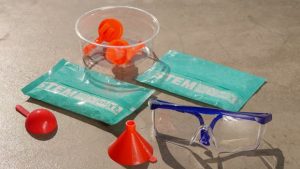Molecular Mobility: Nanotechnology in Vehicle Design
Have you ever wondered how the cars we drive today have become more efficient and safer over the years? One of the major contributors to these advancements in vehicle design is the use of nanotechnology. In recent years, the automotive industry has embraced the use of nanotechnology to improve the performance, safety, and durability of vehicles. This cutting-edge technology has revolutionized the way cars are designed, manufactured, and operated. In this article, we will explore the concept of molecular mobility and its application in vehicle design through nanotechnology. Fasten your seatbelts and join us on this exciting ride! 
The Science Behind Molecular Mobility
Before we delve into the role of nanotechnology in vehicle design, let’s first understand the science behind molecular mobility. Simply put, molecular mobility refers to the movement of molecules or atoms within a material. In the automotive industry, this concept is vital in the development of materials that can withstand extreme conditions and stresses.
With the advancement of technology, researchers have discovered ways to manipulate the movement of molecules at the atomic level. This has allowed them to engineer materials with specific properties and functionalities, making them highly desirable for various applications, including vehicle design.
Nanotechnology in Vehicle Design
Nanotechnology has opened up a whole new world of possibilities in the automotive industry. As mentioned earlier, manipulating molecular mobility has enabled scientists and engineers to create materials with superior properties. This has not only made vehicles more efficient but also safer and more durable.
Lightweight and Stronger Materials
In the past, weight has always been a challenge in the automotive industry. Heavier vehicles require more fuel to operate, which increases carbon emissions and fuel costs. However, with nanotechnology, engineers have been able to develop lightweight materials that maintain their strength and durability. For instance, carbon nanotubes are about 100 times stronger than steel, making them ideal for use in vehicle chassis and body parts.
Improved Fuel Efficiency
Nanotechnology has also played a significant role in increasing fuel efficiency in vehicles. By reducing the weight of vehicles, less energy is required to propel them, resulting in lower fuel consumption. Additionally, nanomaterial coatings have been developed to reduce drag, making vehicles more aerodynamic and further improving fuel efficiency.
Enhanced Safety Features
Another area where nanotechnology has had a significant impact on vehicle design is safety. With the use of sensors and nanomaterials, cars can now detect hazards and respond in real-time to prevent accidents. For example, self-healing nanomaterials have been developed for use in bumpers and body panels, which can self-repair minor scratches and dents, reducing the risk of corrosion and preserving the structural integrity of the vehicle.
Efficient Energy Storage
The use of nanotechnology has also led to the development of better energy storage systems for electric and hybrid vehicles. Nanomaterials, such as graphene, have been used to improve the performance of batteries, making them lighter, more durable, and with a longer lifespan. This has made electric and hybrid vehicles more efficient and attractive to consumers.
The Future of Vehicle Design with Nanotechnology
As technology continues to evolve, so does the potential of nanotechnology in vehicle design. A lot of research is being done to explore new applications and improve existing ones. With the continuous development and integration of nanotechnology, we can expect to see more efficient, safer, and environmentally friendly vehicles on the road in the near future.
In conclusion, molecular mobility, when harnessed through nanotechnology, has greatly influenced and will continue to drive advancements in vehicle design. The use of lightweight and stronger materials, improved fuel efficiency, enhanced safety features, and efficient energy storage are just some of the ways nanotechnology has transformed the automotive industry. As we move towards a more sustainable future, nanotechnology will undoubtedly play a vital role in shaping the vehicles of tomorrow.











